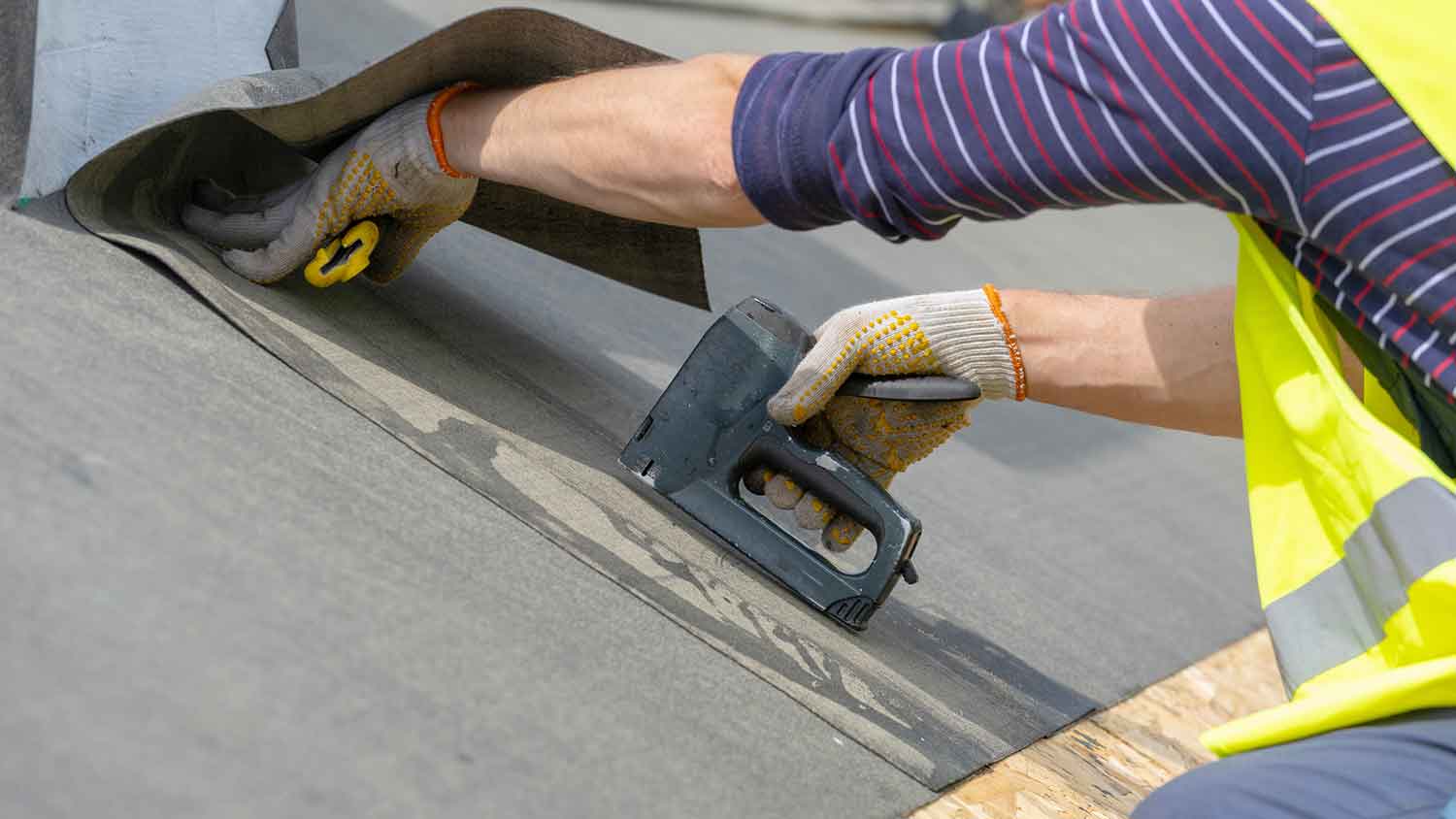What Is Roof Underlayment?
This hidden roofing layer helps protect your home from water damage


Roof underlayment adds a layer of protection between your home and the elements.
Underlayment can be made of asphalt-saturated felt, synthetic material, or rubberized asphalt.
The right underlayment for your roof will depend on roofing material, climate conditions, and budget.
You know how important your roof is for protecting your home from weather-related damage, but you might not know the different components contributing to that protection. Roof underlayment is a layer of roofing that’s hidden from sight but plays an important role in keeping your home dry and safe from damage.
What Is Roof Underlayment?

Roof underlayment is a layer of protective material installed between the roof sheathing or decking and the shingles. Underlayment is made of waterproof or water-resistant material and protects the sheathing from water damage from rain, melting snow, and other harsh weather, keeping your roof and everything underneath it dry.
Benefits of Roof Underlayment
Not all roofs have an underlayment, but if you live in an area with heavy rain or other harsh weather, it’s a worthwhile investment to extend the life of your roof sheathing and protect your home from water damage. Benefits of roof underlayment include:
It prevents mold, mildew, and other water damage to the sheathing or attic
It protects the sheathing from damage from direct contact with shingles
It adds a layer of water protection during periods of heavy wind and rain or snow melt
Types of Roof Underlayment

When it comes to roof underlayment, you have three main options: asphalt-saturated felt, synthetic underlayment, and rubberized asphalt. Each has its own pros and cons, and different roofs may benefit from one type over another.
Asphalt-Saturated Felt
For a long time, asphalt-saturated felt was considered the best underlayment for asphalt shingles. This underlayment, also called “felt paper” or “tar paper,” is made from paper or felt saturated in asphalt to make it water-resistant. It’s available in a range of thicknesses and is the most budget-friendly option. Drawbacks of this type of underlayment include its weight—it’s heavier than other options—and the fact that it’s water-resistant, not waterproof.
Synthetic
Synthetic underlayment is made from woven synthetic material, usually polypropylene or polyethylene, and saturated in asphalt. When comparing felt versus synthetic underlayment, synthetic wins out when it comes to durability and weight—it’s lighter-weight and longer-lasting than its felt counterpart. It’s also more mold- and fungus-resistant, and it’s often considered the best underlayment for a metal roof.
It’s a popular choice, but there are still a few problems with synthetic underlayment. One of the biggest problems is that it can cause moisture build-up between the sheathing and underlayment and break down in extreme heat.
Rubberized Asphalt
Rubberized asphalt is the only truly waterproof underlayment option and can be used to cover the entire roof sheathing or applied only in areas prone to heavy water intrusion, like eaves or flat or low-slope sections of the roof. This waterproof membrane has a sticky backing that adheres directly to the sheathing, creating a tight seal against moisture. It’s easy to apply and patch but costs more than other options.
Choosing the Right Underlayment
Before choosing the right roof underlayment for your home, consider your roof’s material, the local climate and harsh weather risks, and your budget. A local roofing company can help you make the right choice for a durable, protective roof. If your roof is prone to leaks, it may be worth investing in the cost of roof underlayment replacement for a more protective type of underlayment—you may be able to put off having to replace your entire roof.
If you’re missing shingles after severe weather, don’t delay in hiring a roofer— there’s a limit to how long roof underlayment can be exposed before you need to worry about water damage.





- Roofers
- Metal Roofing
- Roof Repair
- Roof Inspection
- Vinyl Siding Repair Contractors
- Flat Roofing Companies
- Commercial Roofing
- Emergency Roofing Companies
- Leaky Roof Repair
- Metal Roof Repair
- Business Roof Repair
- Flat Roof Repair
- Tile Roof Repair
- Slate Roofers
- Rubber Roofers
- Roofing & Siding
- Metal Roof Installation
- Affordable Roofing
- Roof Sealing
- Attic Ventilation Contractors










